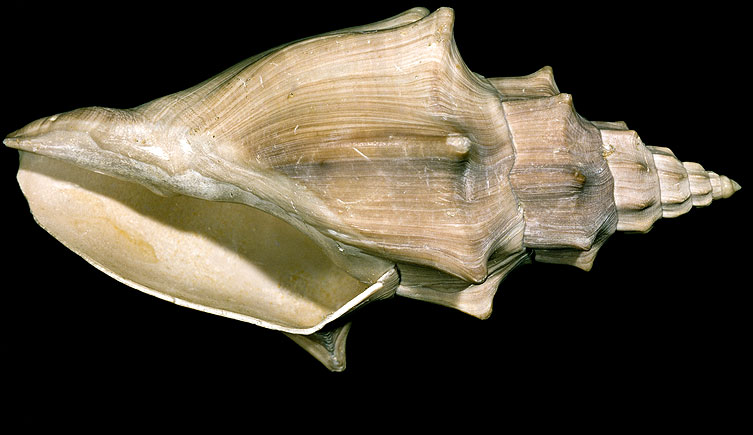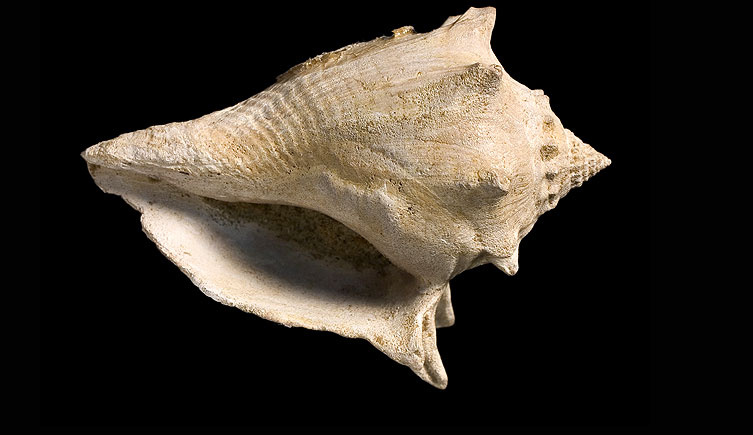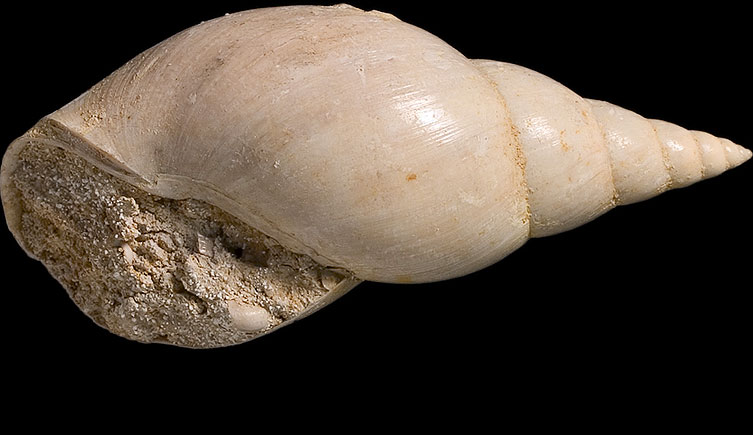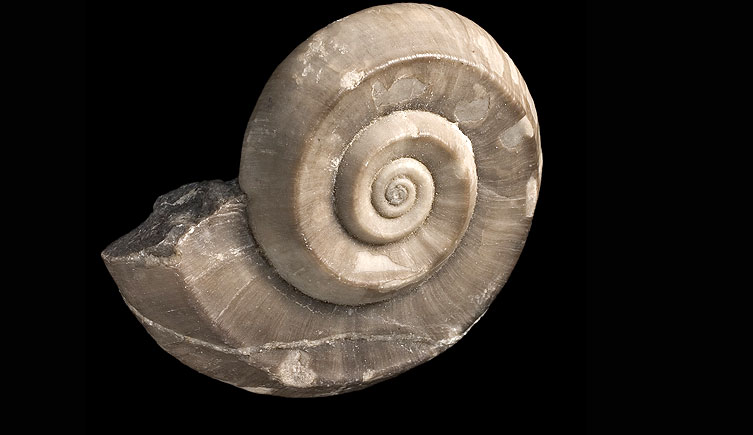
Naticopsis sp., an extinct genus of gastropod from the Late Carboniferous
The Museum's collection of fossil molluscs is among the world’s most systematically, stratigraphically and geographically comprehensive. It includes more than 20,000 type and figured specimens.
Specimens
5,000,000
Type specimens
20,000
The fossil records show molluscs have been systematically diverse and common throughout much of their 530 million year history. Many groups are also excellent indicators of past environmental conditions.
Strengths
The mollusc collection is one of the largest in the Museum, with more than five million specimens.
Our collection contains specimens belonging to the seven shell-bearing molluscan classes from across their entire geological range.
Geological range
- Bivalvia: Early Cambrian to Recent
- Gastropoda: Early Cambrian to Recent
- Monoplacophora: Early Cambrian to Recent
- Polyplacophora: Late Cambrian to Recent
- Rostroconchia: Early Cambrian to Permian
- Scaphopoda: Early Carboniferous to Recent
The collections also include:
- Hyolitha (of probable molluscan affinity): Early Cambrian to Permian
- Tentaculitida (uncertain affinity): Early Ordovician to Late Devonian
- Cornulitida (uncertain affinity): Middle Ordovician to Early Carboniferous
Major collections
The fossil mollusc collection comprises three major groups of material:
Benthic molluscs, comprising the classes:
- Bivalvia (mussels, clams)
- Gastropoda (snails)
Cephalopoda, a class comprising the subclasses:
- Ammonoidea (ammonites and relatives)
- Coleoidea (belemnites, cuttlefishes, octopuses, squids and paper nautiluses)
- Nautiloidea (nautiloids and their Palaeozoic relatives)
Minor groups, consisting of the:
- Hyolitha
- Monoplacophora
- Polyplacophora (chitons)
- Rostroconchia
- Scaphopoda (tusk shells)
- and the enigmatic Cornulitida and Tentaculitida
Most of these groups are arranged systematically using traditional or current classifications. The Bivalvia, Cephalopoda and Minor groups are arranged according to the Treatise on Invertebrate Paleontology.
In addition to the systematically arranged material we have the following collections:
- Cenozoic and Quaternary non-marine molluscs: arranged by fauna and locality
- Faunal assemblages and samples
- Historic collections: by noted palaeontologists
Looking for a specimen?
The mollusca collection is being digitised
Curator
Any questions ?
If you would like to use any specimens for research
Countries of origin
The collection has a worldwide scope including Antarctica and oceanic islands.
In addition to extensive British holdings, Western European countries and former British colonies are particularly well represented.
Specialist reference libraries
- Cox Library: benthic molluscs
- Buckman Library: cephalopods
Important historical collections
- Sowerby Collection: specimens illustrated in the Mineral Conchology
- William Smith Collection: specimens associated with his pioneering mapping of Britain
- FE Edwards Collection: formed the basis for the study British Tertiary, and includes Palaeontographical Society Monograph specimens
- Solander Collection: contains some of the first British fossils to be named and described
- Sir Charles Lyell Collection: specimens collected from Atlantic Ocean Islands by one of the world’s most celebrated geologists
- Sir Charles Darwin Collection: specimens collected from South America during the voyage of HMS Beagle
-

Specimen of the large marine gastropod Voluta muricana showing an ornate, spiralling shell with a large aperture.
-

An Eocene shell of Volutospina measuring 5cm and showing prominent spines on the shoulders of the whorls.
-

The distinctive shells of the bivalve Trigonia and its close relatives are common in Jurassic rocks. This example from Gloucestershire, England, measures a little over 4cm in width.
-

A thin-shelled, freshwater gastropod Lymnaea, measuing 3.7cm in length, collected from the Eocene of southern England.
-

Oblique view of a 5.5cm specimen of Straparollus, an almost planispirally-coiled gastropod from the Carboniferous.
Related information

Collections on the move
Access to some collections will be affected as we prepare for the move to our new collections, science and digitisation centre.

Accessing the collections
Scientists and collections management specialists can visit the collections and borrow specimens for research.

Collections management
Our duty is to provide a safe and secure environment for all of our collections.